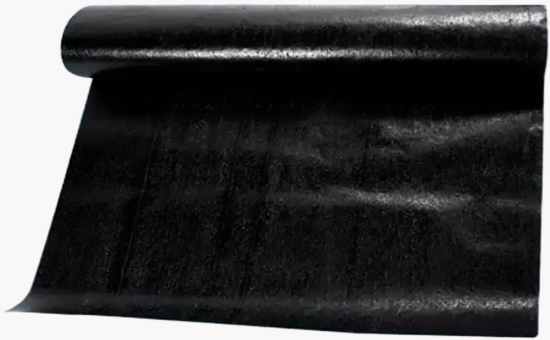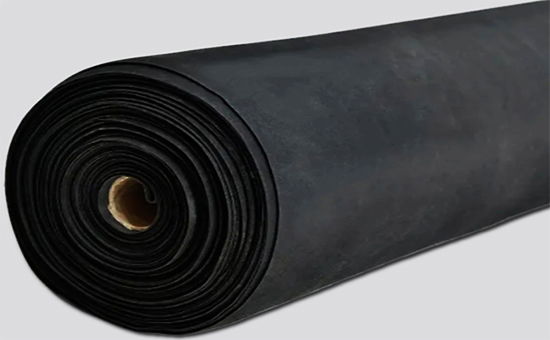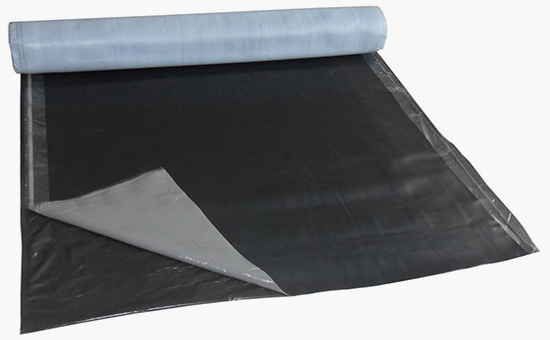
Butyl rubber has excellent properties such as heat resistance, ozone resistance, weather aging resistance, and acid and alkali resistance, and is widely used in the production of waterproof membranes. Butyl recycled rubber, made from waste butyl inner tubes, retains the basic performance characteristics of butyl rubber. It can be used alone or together with butyl rubber to produce waterproof membranes, with fast extrusion speed, minimal shrinkage of semi-finished products, and good dimensional stability of finished products. By reasonably designing waterproof membrane formulations containing butyl recycled rubber, it is possible to reduce more costs while ensuring product performance.
1. Key points in designing the vulcanization system for waterproof membranes produced with butyl recycled rubber
When producing rubber waterproof membranes using butyl reclaimed rubber or a blend of butyl rubber/butyl reclaimed rubber as raw materials, a sulfur-accelerator system is commonly adopted. Since butyl reclaimed rubber has low unsaturation and few crosslinking sites, the sulfur content is generally low. It is common to use a combination of sulfenamide-type and thiazole-type accelerators, along with a small amount of sulfur. When producing waterproof membranes with butyl reclaimed rubber, metal oxides and organic acids can also be used as vulcanization activators to enhance the activity of organic accelerators.

2. Key points in designing the reinforcing and filling system for waterproof membranes made from butyl reclaimed rubber
When producing waterproof membranes using reclaimed butyl rubber or a mixture of butyl rubber/reclaimed butyl rubber, commonly used reinforcing agents include fine particle thermal carbon black, rapid extrusion carbon black, and easy-mixing furnace black. These have good dispersibility in the rubber compound and can provide better reinforcement effects and processing flowability. Fillers such as calcium carbonate, kaolin, and talc can be selected to further improve the processing properties of the rubber compound and reduce the cost of raw rubber.
3. Key points for designing a softening system for the production of waterproof membranes with reclaimed butyl rubber.
Common rubber oils used for producing waterproof membranes with butyl regenerated rubber or a combination of butyl rubber/regenerated butyl rubber include paraffin oil and naphthenic oil. Paraffin oil has good chemical stability and low volatility, effectively reducing the viscosity of the compound and improving processing performance. In the production of waterproof membranes, the addition amount is generally 7-15 parts; naphthenic oil has moderate viscosity and good low-temperature performance, which can enhance the flexibility and low-temperature properties of the compound. In waterproof membranes, the addition amount is generally 5-15 parts.

4. Vulcanization formulation for producing waterproof membranes using a combination of butyl rubber and regenerated butyl rubber
65 parts of butyl rubber, 35 parts of reclaimed butyl rubber, 5 parts of zinc oxide, 2 parts of stearic acid, 2 parts of antioxidant, 70 parts of fine particle thermal carbon black, 15 parts of easy-mixing furnace black, 5 parts of naphthenic oil, 1.2 parts of accelerator TMTD, 0.5 parts of accelerator M, 1.3 parts of sulfur; total: 202 parts.
In actual production, reclaimed butyl rubber can not only be used together with butyl rubber to produce waterproof membranes, but can also be combined with EPDM, reclaimed EPDM, chlorinated butyl rubber, and reclaimed chlorinated butyl rubber. Further discussion on the blending techniques of reclaimed butyl rubber in waterproof membranes will continue with you later.
Exclusive original article [commercial authorization] reprint, excerpt and excerpt in any form are prohibited without written authorization. Focus on Hongyun rubber: learn the process formula and raw material technology of producing rubber products from recycled rubber to help you reduce costs and increase profits